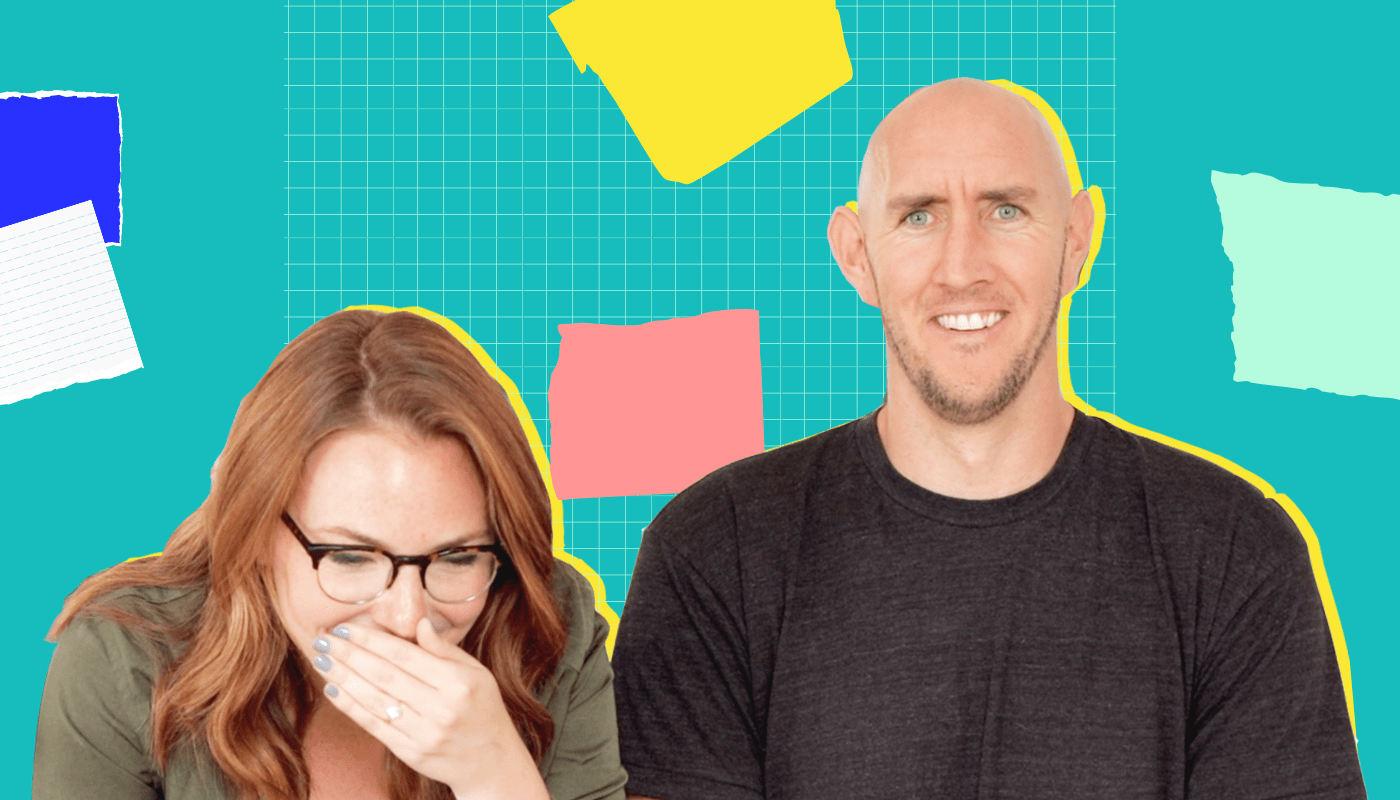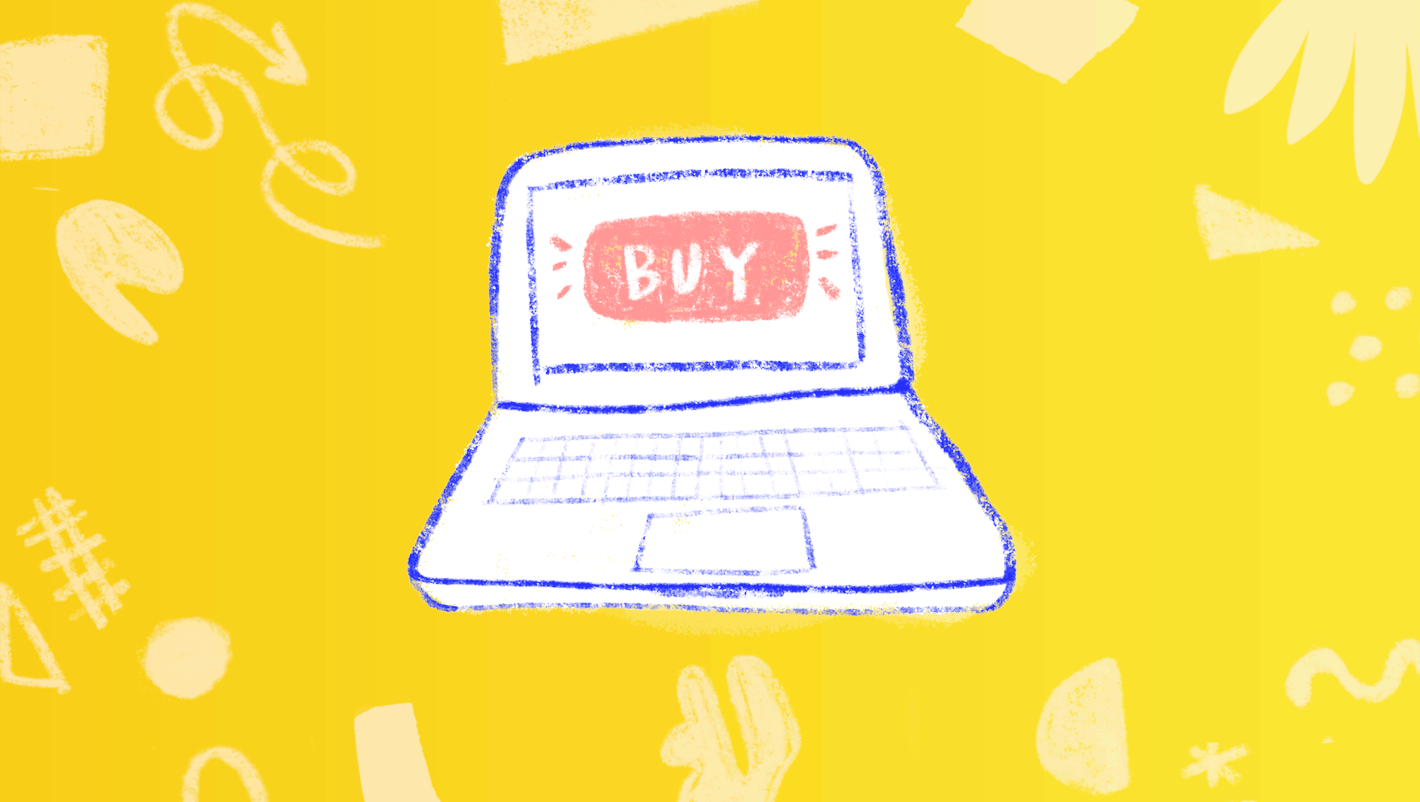Business Part 4: Pricing With 5s, 7s, 9s, and The Compounding Interest of Trust
Let’s just rip the bandaid right off this sucker: Using 5s, 7s, and 9s in product pricing is a psychological tactic and we’re not going to do it anymore.
If you missed the post about defining our business model for Wandering Aimfully, which included the explanation of our $100/month pricing, go ahead and get caught up by clicking here. But, truthfully, you’re kind of caught up if you just read that sentence.
We’ve decided to charge $100 per month for the Wandering Aimfully membership. Not $99. Not $97. Not $95. Just plain ole $100.
And now you might be wondering... why?
A brief history of my experience with picking pricing for my businesses
My first business was a tiny design company back in 2006. We were two designers, somewhat fresh out of college, trying to escape the 9-to-5 world and work for ourselves. The thought never occurred to us to do anything other than use round pricing numbers since we charged hourly rates ($100/hour, then $120/hour, and on and on). This makes sense for most service-based companies, and 5s, 7s, and 9s rarely come into the equation.
My second business (IWearYourShirt) was an off-the-wall idea and the pricing of it followed suit. Every day on the calendar was available for "purchase" as ad space, with the first year sold in $1 increments and bumped up by $1 on each day of the year. January 1st was $1, January 2 was $2, all the way up to December 31 at $365. Sure, $95, $97, $99 and others like it existed, but only by necessity of a full 365-day calendar.
Then, in 2013, I dove into the online product space (courses, books, etc). This was the first time I’d ever heard/read people talking about using 5s, 7s, and 9s in their pricing. As I would learn, products with prices that ended with 5s, 7s, or 9s resulted in more sales. Naturally my first online course was then priced at $497, and I didn’t even consider making it an even $500. The “experts” told me to use a seven, so by golly I was going to use a damn seven!
It wasn’t until I was actively promoting and selling that first online course that I took a moment to think about why $497 would sell better than $500. I was attempting to convince people they weren’t paying $500. Essentially I realized I was trying to trick people.
No, no, dear customer, I wouldn’t possibly charge you that much! It’s ONLY $400… plus $97 measly extra dollars on top of that. Definitely not $500. That would be too much.
Selling that first online course and a few subsequent courses after it started to have an effect on me. I no longer felt like I was using a sales tactic because it benefited the potential buyer, I felt I was using a sales tactic because it tricked a potential buyer. Tricking people into buying things was never my intention. Presenting them with an opportunity to purchase something that could solve a problem I’d solved in my own life was how I wanted to operate my business.
Drawing my line in the sand with pricing
I didn't like this feeling of trickery that the 5s, 7s, and 9s, gave me, so I finally decided to draw my line in the sand with pricing—and I did it on my highest priced product.
When the idea for BuyMyFuture came to me in 2015, I knew right away that I didn’t want to play mind games with people. I was going to be selling the highest priced product I’d ever sold, and I wanted people to buy-in without using psychological tactics.
That product was priced at $1,000. There was also a payment plan option that was $250 per month for four months. Some interesting things came of making those pricing decisions:
- People thanked me for not pricing the payment plan higher than the buy now option (which I still find insane that other people do that).
- People thanked me for pricing something using whole numbers.
- It was very easy for me to calculate how much revenue that project was bringing in after every sale!
I have no way of knowing how many more (or less) sales I would have received during that initial launch of BuyMyFuture had the price been $995, $997, or $999. But it’s a moot point. The key is that I wanted to price my product in a way that wouldn't bring me guilt, and I did exactly that.
From that moment on I’ve priced nearly* everything I’ve sold using whole numbers. I consider this to be another step in the process of being an authentic online business owner and building trust with my/our audiences.
*I have a software product that still uses a 9 ($49). The main reason this hasn’t changed is that it’s a complete pain in the ass to update software subscription pricing. Just know that I do think about it often and it will change eventually.
How we’re focusing on the “compounding interest of trust” with our potential customers
This whole notion of even pricing brings up an important point that we're trying to bake into every aspect of Wandering Aimfully, and that's trust.
Trust is a funny thing. It’s a little bit like one of those thermometers people draw on a giant piece of paper and try to color the whole thing in when they achieve different milestones for their project. Except, if we’re thinking of trust in this visual thermometer metaphor, trust is a completely invisible thermometer that you simply have to believe in.
Compounding interest of trust is just like compounding interest for investing: It can be hard to understand or see, but we believe it to be true and know it’s valuable.
Giving consistent, authentic value leads to trust
Caroline and I have both written a weekly email newsletter since 2014. Every week we visited the inboxes of our subscribers and tried to deliver something useful to them. And with every one of those weekly deliveries, we knew that we were building a connection and increasing trust.
If there’s one HUGE lesson we’ve learned in business, it’s that showing up consistently and authentically goes a long way.
I would venture a guess that 90% of the customers we have for our products have had multiple interactions with us over the years. Each one of those interactions, be it through email, social media, etc, are small investments in our trust bank. And with every one of those investments, the amount of trust compounds on top of itself.
We want Wandering Aimfully to be priced at a “too good to be true” amount
Let's go back to my BuyMyFuture project for a moment. When the idea came to me to bundle up all of my courses, guides, books, and software products (along with anything I’d make in the future) into ONE thing people could purchase, I wanted the price to be feel too good to be true.
And guess what? That’s exactly what people said to me. $1,000 for everything I’d created at the time plus everything I’d create in the future?! We continued this trend with BuyOurFuture, when Caroline joined the future-selling party. Our customers continued to tell us they knew they were getting an amazing deal.
We’re taking that experience and doing our best to create the same feeling with our $100/month Wandering Aimfully membership. Sure, our customers will get access to…
- Software products, which alone would cost $100/month
- A library of 15 video courses
- A handful of helpful guides
- Step-by-step roadmaps to achieve specific goals
- A community of helpful, engaged creative business owners
- Quarterly hand-crafted packages in the mail
- Quarterly live calls
- Ongoing access to us
…but they’ll also get all the new stuff we’re cooking up (plus see behind the scenes on how we build everything).
Our hope is that folks (maybe even folks like you) will join Wandering Aimfully and think: “Whoa, I’m paying $100 per month for this?? What a steal!” Because we know thoughts like that add to that compounding interest of trust.
We don’t know what the future will hold, but we’ll never raise our prices on existing paying customers
This is one of those trust-building tactics we’ve used for years (and it never felt like a tactic). When I redid my sponsorship course a few years after the initial launch, I gave the newer version to all the existing customers at no extra charge. It was an entirely additional course filled with content, but I believed they should get it without paying. Those customers were extremely happy and won’t forget that.
When Caroline came on and we changed BuyMyFuture to BuyOurFuture, we could have positioned it in such a way that BuyMyFuture members would need to pay to upgrade to get Caroline’s stuff. But that’s just not how we do things. We upgraded all BuyMyFuture members to BuyOurFuture, some of which only paid $1,000 and were now getting a $2,000 product (at no extra cost). We responded to many an email saying, “No, seriously, you get all of Caroline’s stuff and don’t have to pay for it.”
We don’t know what the future holds for our Wandering Aimfully membership, but we do know the $100 per month price will increase at some point. However, for the folks who sign up at $100/month, they’ll always pay $100/month for as long as we sell Wandering Aimfully. It’s not the optimal financial business decision for us, but it is the optimal trust-building decision for us.
You can’t buy trust. You can only do things that increase your customer’s trust in you. We believe that even though it's hard to quantify, people want to buy things from people they trust. Every decision, big or small, that contributes to the trust between you and your customers is an investment in the long-term health of your business.







